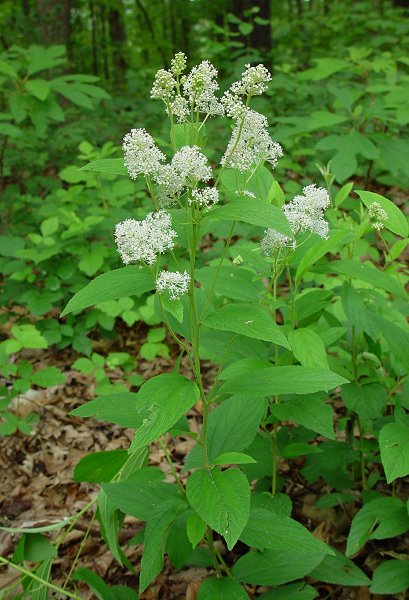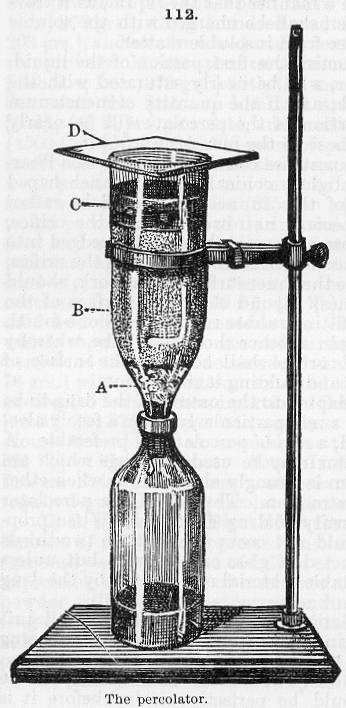Common Names: Red Root, New Jersey Tea, Wild Snowball
Scientific Name: Ceanothus americanus

Family: Rhamnaceae (Buckthorn family)
Parts Used: Root bark
Harvesting: Semi-hardy shrub growing to ~5 feet. Grows in dry woodlands, gravely banks, and open woods; and flowers from June to August
Qualities: bitter, cold, dry
Constituents/Nutrition: Flavonoids, alkaloids, tannins, phenolic and organic acids, quercitin, resin, methylsalicilate
Properties/Actions: Astringent, Antioxident, Antispasmodic, Antimicrobial, Decongesting, Cooling, Anti-inflammatory, Expectorant, Sedative. Great Lymphatic… moves the lymph like poke but much more gently.
Uses/Indications: For inflammatory and spastic condition, especially in the gastrointestinal tract (diarrhea, stomachache) and upper respiratory tract (cold, cough, asthma), heavy or painful periods, liver stagnation, whooping cough, bronchitis, lymph congestion, as a gargle for mouth and throat irritations. Leaves can be used as a substitute for Chinese tea.
Folk History/Magical Uses: Used by Native Americans as a hair rinse or as a stimulating tea.
Cautions/Side Effects: Can lower the blood pressure. Don.?take if you have blood coagulation problems.
Preparation: Tincture or decoction
My Thoughts: I really know very little about this plant. But, my herbalist recently recommended that I use it. So, I thought I would get to know it. I am trying a percolation, as opposed to maceration, method to make a tincture for myself. It.?pretty neat. The herbs actually sit in a cone and the alcohol filters through it pulling out all the medicine. This is my first attempt, so I will let you know how it works, and take some pictures. I have a wine bottle with the bottom cut out, then I flip it upside down and pack the herb in the cone part. Like this:

This site has some great pictures
Bibliography:
Foster, S., & Duke, J. 1990. Eastern/Central Medicinal Plants. Houghton Mifflin
Company, New York.
Holmes, P. 1998. The Energetics of Western Herbs, Vol 2. Snow Lotus press, Colorado.
Meyer, J. 1918. The Herbalist. Meyerbooks, Illinois.
Percolator. Retrieved on January 7, 2006 from
http://www.henriettesherbal.com/eclectic/kings/extracta.html
Skenderi, G. 2003. Herbal Vade Mecum. Herbacy Press, New Jersey.
How interesting! I’m going to try my hand at making my first tinctures! Any hints?
Let us know about how the percolation method works! How exciting!
Hey Christine! It’s good to hear from you!
Tinctures are really easy once you get started. Do you have any books with instructions? There is the “wise woman method” where you basically pour a 50% Alcohol on top of the herb until it is covered and let it sit for 2-6 weeks. Then there is the more scientific method where your use ratios of herb weight to alcohol milliliters (that’s why you see a tincture that will say 1:2 or 1:5 on it) Do you know what method you are using?
It feels so empowering to be making my own medicine! I liked it even more once I got to do more than teas since the tinctures keep so long.
I’ll be posting pictures of the percolation very soon… it’s almost done. (one thing I like about percolation, you have a finished product within 48 hours!)
I was going to use the ‘wise woman method’! It seemed the easiest! I was thinking of substituting the alcohol with glycerine- what has been your experience with glycerine vs alcohol?
Can the percolation method be used with any herbs? I like the idea of having a finished product within 48 hours too!
Cannot wait to see your photos!
Hey a quick question…how did you cut off the bottom of the wine bottle? I’ve got tons of bottles (I really, really like wine! 🙂 ), and I know I knew how to do it as my dad used to do it all the time, but I’ve forgotten!!
I use glycerine for kids tinctures, but in general, they don’t come out as strong. Alcohol just pulls out the medicine better. For kids though, it is great!
For percolation, seeds, bark and root are best. The more evenly the herb turns to powder, and doesn’t soak up the alcohol, the better.
I got my percolator cone from an herbalist friend. But I think he set up something to hold the bottle tight, but gently and then used a glass cutter
I could get one for you if you like. It was $15, I think…
Yes, I had read that for kids tinctures, glycerin was better. Do you use vodka for the alcohol?
I called my dad and had him remind me how he used to cut bottles. Now that I have his information, let me give it a try. If it doesn’t turn out well, I’ll take you up on your herbalist friend’s percolator!
I use everclear or grain alcohol and then water it down to whatever percentage of alcohol I want. I started by using Vodka, since it is 50% alcohol, but the taste of the everclear (and especially the grain alcohol) is much lighter and easier to handle.
And where would I find everclear? (I feel like its such a silly question but one doesn’t learn unless you start asking all questions!! 😉 )
The ABC store (Alcoholic Beverage Control) I think they are in every state. It should be where ever you get your vodka.
… that percolator .jpg is from my site.
OOh, Thank you Henriette! Sorry! I forgot about referencing the pictures! I’m still fairly new to this on-line biblio. thing, so I appreciate the help.